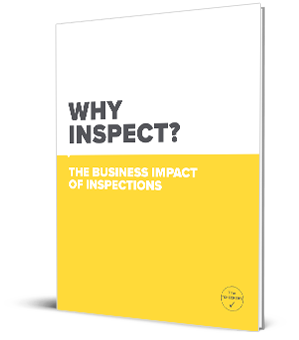Employers in all UK industries have a legal obligation to meet health and safety standards and minimize the risk of injuries to workers and members of the public. Among these responsibilities is the requirement to conduct risk assessments and address concerns. Understanding the most common workplace hazards is helpful when approaching this process, not only for legal compliance.
If employers fail to address the hazards listed here and a worker is injured, the injured party could make an accident at work compensation claim, affecting the organization’s insurance premiums and reputation. There may even be legal penalties involved in some instances. Here, we outline ten of the most common risks in UK workplaces and how employers can address them to avoid legal liability for accidents.
1. Slips and Trips
The most common type of non-fatal workplace accident is a slip, trip, or fall, which can occur in any environment but is more likely when certain risk factors are present. These include wet floors or other slippery surfaces, low lighting, uneven flooring and obstructed walkways, all of which require action from employers to minimize risks. Employers should implement wet floor signs and high-visibility floor markings to help workers identify risks. They should also address issues like trailing electrical wires, frayed carpets or clutter, implement spill control procedures, install non-slip mats, and take necessary steps to minimize risk. Although most slips, trips, and falls result in minor injuries, they can still lead to compensation claims and require businesses to pay settlements. They can also affect productivity, particularly if workers are absent due to injuries.
2. Falls From Height
Higher on the list of fatal injuries is the risk posed by falls from height, or by objects falling from height and colliding with workers below. While this may be more common in industries such as construction, where working at heights is a regular part of the job, any worker who climbs a ladder is at risk of this type of injury. Workers should receive training on safe practices and the proper use of tools at height and be provided with any necessary personal protective equipment (PPE) before being asked to perform this type of work.
3. Electricity
There is a range of risks associated with electricity that should be avoided. Any work involving electricity should be conducted only by trained professionals. Businesses should promptly address risks, such as exposed wiring or faulty equipment. An accident involving an electrical appliance or outlet can result in electrical shocks and burns, prompting businesses to consider investing in portable appliance testing to verify the safety of their equipment. Trailing wires can also represent a trip hazard, and unsafe electrical connections can increase the risk of the next common hazard: fire.
4. Fire
The most significant contributor to the risk of fire-related injuries is a lack of suitable fire safety measures. Workplaces are subject to various legal requirements regarding fire safety, including installing fire alarms and conducting fire drills, regulations governing the installation of fire blankets and fire extinguishers, and the positioning of fire doors and fire escapes. Premises owners/occupiers should verify that their fire safety efforts go above and beyond the legal requirements to maximize worker wellbeing and minimize the risk of injuries.
5. Exposure to Hazardous Substances
Another area of risk to which specific regulations apply is the use, storage and control of dangerous chemicals and substances. Any organization that uses these products must align with the Control of Substances Hazardous to Health (COSHH) regulations. It’s important to understand that the COSHH rules don’t just apply to substances only used in highly specialized industries. Some commonplace products, such as cleaning agents, may need to be used according to these rules, which typically involve following strict labelling and storage requirements, and ensuring workers receive training and PPE to use them safely.
6. Machinery Accidents
All kinds of machines can pose risks to worker health and well-being, not just the heavy machinery used in construction or manufacturing. Cuts, fractures, lacerations, crush injuries and other serious injuries can be caused by a range of different types of machinery, as can electric shocks or other types of injuries described above. Workers should be provided with personal protective equipment (PPE) and suitable training before they are entrusted to operate machinery. Additionally, policies against loose-fitting clothing, gloves, or long hair, which can increase the risk of being drawn into machinery, should be enforced.
7. Vehicle Accidents
In working environments such as warehouses or construction sites, where pedestrians and vehicles share the same space, utmost care must be taken to minimize the risk of collisions. This means employers should separate traffic streams as much as possible and designate safe walking pathways away from vehicle traffic routes.
8. Lifting and Carrying
While injuries sustained during lifting and carrying may seem like the employee’s responsibility, there are many scenarios in which their employer might be liable. If workers were asked to lift heavy objects without appropriate training, or if the task could have been carried out using equipment or machinery that was not available, the employer may be liable for the resulting injury. This could lead to a claim for compensation for injuries suffered.
9. Ergonomics
Many workplaces contain ergonomic hazards, from unsuitable workstations to the risk of repetitive strain injuries. Employers must provide workers with breaks from repetitive tasks or vary the actions they are required to perform. Similarly, it may be worthwhile to evaluate whether there is any risk of injury caused by an unsuitable workstation and consider providing standing desks, adjustable chairs or other solutions.
10. Stress
Mental health concerns can be as significant as physical injuries regarding compensation claims and an employer’s responsibility to protect workers’ health and well-being. In addition to implementing anti-bullying and anti-harassment policies and monitoring workloads to ensure employers are not overwhelmed, businesses must actively address any concerns raised. Otherwise, there is a risk of being held responsible for mental health symptoms that workers experience as a result.
This is a guest post from Katrina Elsey, Senior Associate Litigation Executive at Switalskis Solicitors Ltd.











